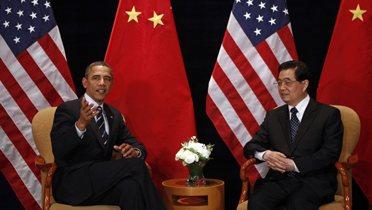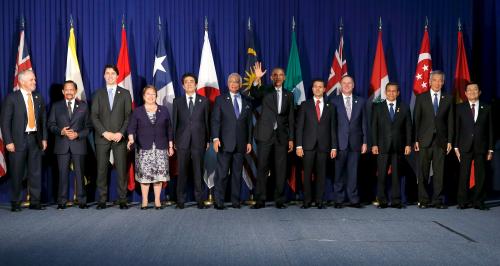Life is all about choices, they say. The choices we make today help determine the outcomes in the future. For the global economy, as well, today’s policy choices play a major role in shaping future growth prospects.
A rising tide of trade and investment has supported a broad-based global expansion over the past two years. However, that tide now appears to be receding. More worryingly, mounting risks threaten the global expansion. Hence, policy decisions today will be critical determinants in whether the global expansion can be prolonged.
Global growth: Still strong but moderating
As the World Bank forecasts in its latest Global Economic Prospects report, despite recent signs of softening activity, global GDP should grow a robust 3.1 percent in 2018. However, the pace of economic expansion is expected to edge down over the next two years.
Activity in advanced economies is projected to grow 2.2 percent in 2018 before easing to a 2 percent rate of expansion next year as major central banks gradually remove monetary stimulus. GDP in emerging market and developing economies is anticipated to expand 4.5 percent in 2018 and 4.7 percent in 2019 as the recovery in commodity exporters matures and as commodity prices level off following this year’s increases.
Risks: Tilted to the downside
Yet while the near-term global outlook is still conducive to growth, multiple risks threaten to throw it off course: the possibility of disorderly financial market movements in response to central bank moves; escalating trade protectionism; heightened policy uncertainty; and geopolitical tensions. Some of these storm clouds have begun to look more ominous recently.
First, the possibility of financial market disruptions has increased in 2018. Turmoil could be triggered by a reassessment of inflation risks as market expectations about advanced-economy monetary policy shift. Stretched asset valuations and the prospect of further U.S. dollar appreciation are other potential air pockets.
A consequence of any such turbulence could be a sudden tightening of global financing conditions—to which highly indebted emerging market and developing economies would be particularly vulnerable. Of concern in this regard is an elevated level of corporate debt in many of these economies. Since a sizeable share of corporate debt is denominated in foreign currency, managing currency risk is also a major challenge for some emerging markets.
Second, the risk of escalating trade restrictions has intensified amid recent disputes among major trading partners. A substantial increase in trade-restrictive measures between major economies could lead to significant adverse consequences for global trade and economic activity.
For example, an escalation of all existing tariffs up to legally-allowed bound rates by the World Trade Organization could lead to a drop in global trade flows of 9 percent over the next two years, the same magnitude of decline experienced during the 2008-2009 global financial crisis. Higher tariffs could also lead to shifts in trade patterns and sectoral production that could deal a blow to labor markets. Setbacks to economic activity and an escalation of uncertainty around the direction of policy in major economies would result in significant negative spillovers to the rest of the world through trade, confidence, financial, and commodity-market channels.
The materialization of any one of these scenarios could tip the global economy into a serious slowdown. Adding to these concerns, historical patterns suggest we may be due for an economic restart: The global economy has gone into recession or major slowdown in every decade of the last half century: 1975, 1982, 1991, 1998, 2001, and 2009. These episodes were triggered by different types of shocks, including policy mistakes. Given this track record, the prospect of another recession or slowdown over the next 10 years does not seem so far-fetched.
Duration of expansion: All about policy choices
Between the prospect of moderating growth and the intensification of risks, policymakers have little time to waste in calibrating their fiscal, monetary, trade, and structural policy stances to nurture the economic recovery.
Considering recent debates, trade policy is a good place to start. It is critical to support an open, rules-based, and predictable multilateral trading system. Trade helps promote growth because it facilitates job creation, improves resource efficiency, provides access to technology and know-how, and expands markets. Policymakers would do well to work together to resolve trade disputes and promote policies to ensure that all benefit from the opportunities offered by trade integration.
Preparing for globally higher interest rates should also be on the to-do list. In emerging market and developing economies, policymakers need to beef up monetary and fiscal buffers to get ready for the well-advertised tightening path of monetary policy in advanced economies. They should also address intensifying structural challenges by investing in human and physical capital and improving institutions.
The global economy has been in an expansionary mode for over nine years. The good news is that expansions don’t die of old age. However, they do die eventually, often because of policy mistakes. Policy choices today will have consequences for the durability of global expansion tomorrow.
The findings, interpretations, and conclusions expressed in this blog post are entirely those of the author. They do not necessarily represent the views of the World Bank, its Executive Directors, or the countries they represent.
The Brookings Institution is committed to quality, independence, and impact.
We are supported by a diverse array of funders. In line with our values and policies, each Brookings publication represents the sole views of its author(s).







Commentary
Sustaining the global expansion
June 13, 2018